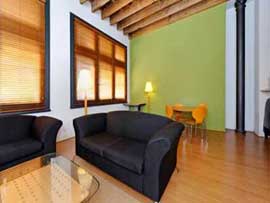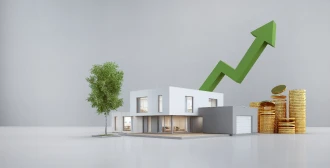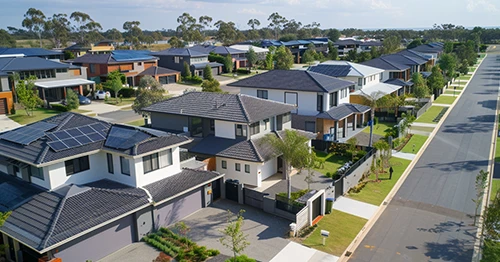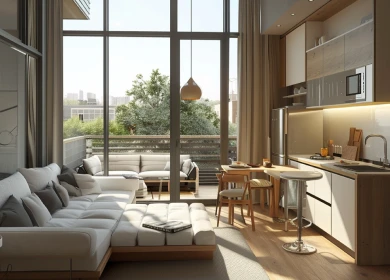Updated: 29 May, 2025
There are many old unused warehouse and loft spaces in and around major cities. When investors and developers convert these into large, open plan apartments they are called warehouse conversions, or loft conversions.
Many people are attracted to the buildings that have character and history in their very structure. With new developments this can either be incredibly expensive, or most likely impossible to recreate.
The buildings can also provide a blank canvas for many looking to create their own loft-style apartments.
How are they different to a normal apartment?
They differ in the fact that they specifically apply to converted warehouses and other similar types of repurposed buildings. As mentioned above they also contain character and history uncommon in different styles of older buildings and mostly absent in new developments.
They may also differ in their open plan design. High ceilings and few or no dividing walls provide a wonderfully inviting living area unlike most you can find in other types of property.
What are the pros and cons?
Benefits of a warehouse conversion
- Large open plan spaces which are perfect for entertaining
- You can try your hand at interior decorating, treating the space as a blank canvas
- In a good area with strong market presence you can sell for a great return
- Often in inner city areas with access to transport and the CBD
- You can convert into commercial space if residential demand is low
Disadvantages
- Depending upon your financial situation, it can be difficult to find a lender willing to approve your warehouse conversion
- If you are converting yourself it can be difficult and expensive to complete
- Once completed the properties can be hard to sell
- Difficult and expensive to heat during winter
- Safety in industrial areas may be harder to guarantee
- Urban amenities in the area may be scarce such as transport and shops
Financing a converted warehouse

Financing an apartment is easier when the conversion has already been completed. Banks much prefer this than an off the plan mortgage where the loan is given based upon building plans and assumed values. They also prefer the property to be situated in a good location with strong market demand.
Banks can be conservative with warehouse conversions. Often they can be in industrial areas, or have limited appeal due to their unique design.
Some lenders also consider buildings with more than 30 apartments as a high rise, and have different lending policies.
However as long as you find a good mortgage broker with access to many different banks and lenders, you should be able to find one willing to assess your loan. With these applications it is beneficial to be in a strong financial position with a good income.
For information on how much you can borrow you can read our page on warehouse conversions. You can also ask a question in our Disqus comments section below, where our brokers are ready and willing to assist.
Tips for buyers
Buying a warehouse conversion can be tricky. Here are some things you should take into account:
- Make sure you buy in a good area: Industrial areas may not make good places to live
- If you are converting with intent to sell, make sure there is strong market demand in the area.
- Take overzealous marketing into account: Sometimes this can cause properties to be overvalued and you may end up paying too much and not being able to sell at a profit.
- Make sure the warehouse is in good condition: Remember to check the basics such as plumbing and other utilities as well as the condition of the floors, walls and ceilings.
- Do not commit to buy without preapproval from a lender unless you have a finance clause (cooling off period) written into the contract: Your application may be declined and you will be liable for the debt, yet have no loan to pay for it. (Note that the clause will depend upon which state the property is in as each state has its own property laws.)
Residential and commercial conversions
Warehouse conversions usually come in two distinct flavours; residential and commercial. Banks and lenders will take this into account as it affects the probability of selling the renovated space, as well as the probable cost of renovation and possible return on the sale.
Residential conversions are those specifically transforming the space into a liveable area. This includes kitchens, bathrooms, bedrooms and the main living space.
Commercial conversions are slightly different. Sometimes they can be converted to be used in light industry such as seamstress or printing services. Often they are used primarily as office space and left fairly bare, similar to empty office buildings.
History
In most major cities as the gentrification of industrial areas happens, many areas become unviable for certain types of industry to remain. As industry leaves, the warehouses and lofts become available.
These buildings are usually in good structural shape and their open plan design lends themselves easily to creative redevelopment. Both residential and commercial designs can take shape.
Locations in Australia
You can find examples of warehouse conversions in the old industrial precincts all over Australia, from Melbourne to Sydney and all the way over to Perth. Many of these old buildings are in central locations near city CBDs and public transport, making them ideal for inner city living.
Some examples of suburbs with current developments are;
Sydney
- Pyrmont; The old converted woolstores
- Woolloomoolloo
- Chatswood
- Randwick
Melbourne
- Flinders lane in the CBD
- Richmond
- Fitsroy
- Port Melbourne
Perth
- Margaret River
- Freemantle
- Northbridge





